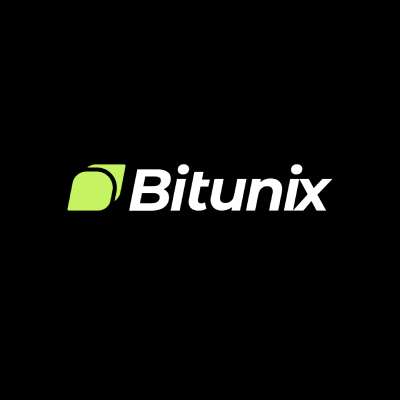Babylon получил посредственный отклик спустя месяц после запуска. Сохраняется ли логика повествования BTCFi?
Автор оригинала: Хаотянь (X: @tmel0211 )
It has been nearly a month since @babylonlabs_io mainnet was launched, but the expected BTCFi market response was not as enthusiastic as expected. So, what problems were exposed during the first phase of Babylons pledge process? Is Babylons sustainable interest-bearing narrative logic valid? Is Babylons market expected impact overestimated? Next, let me share my thoughts:
1) Babylon’s innovative core is to adopt a self-costodian self-custody approach, which allows users’ BTC assets to be locked in the Bitcoin mainnet in the form of script contracts, while being able to output “secure consensus services” on many BTC layer 2s and then obtain rich benefits provided by other extension chains.
At this stage, only the first half of this sentence is true. Indeed, Babylons sophisticated and complex cryptographic algorithm architecture allows users to realize the possibility of additional income while holding BTC in self-custody. Other CeDeFi or Wrapped forms allow native BTC to break through the constraints of the original chain and require a third-party custody platform, which Babylon does not need. If the wallet supports it, users can see that the BTC they pledged to the Babylon protocol is still displayed in their balance.
The second half of this sentence is currently only an immature pie. Because in order to transform Babylons security consensus into services and generate revenue, the following prerequisites are required:
First: there must be a large number of users, including Validators nodes with a large proportion of voting rights, who will stake BTC in Babylon and deploy it in the Bitcoin mainnet protocol;
Second: It is necessary to aggregate a large number of LST assets and generate strong liquidity to form the basis for the growth of ecological users, TVL, etc.;
Third: A large number of new layer 2 POS chains must purchase the security consensus services provided by Babylon and provide sustainable Yield benefits;
2) Currently, the Babylon protocol has only opened limited staking of 1,000 BTC in the first phase, which can only be regarded as an experimental launch phase, but it has exposed many problems, which makes it challenging to meet the above three prerequisites at the same time. For example:
1. The staking process and the interaction with the Babylon protocol will generate higher transaction fee losses.
Including: the soaring loss of the overall transaction fee of the network caused by the Fomo effect of the pledge network, and the corresponding handling fees generated by subsequent protocol Unbond, Withdraw and other operations.
Take the first phase of War Staking as an example: if each transaction is limited to depositing only 0.005 BTC, and only transactions within the first 5 blocks are valid. Assuming that an institutional Validator wants to deposit 100 BTC, it needs to initiate 20,000 transactions on the chain within 1 hour, and confirm them earlier than other competitors transactions. This will inevitably lead to a short-term surge in network transaction fees, greatly increasing the cost of pledgers. It is understood that the mining fee ratio exceeds 5%. (For reference only, the specific data is subject to official data)
2. The native BTC deposited by Babylon and the Wrapped version of BTC that can be circulated in its ecosystem are not limited to 1:1.
Since Babylon does not have a Wrapped version of BTC in direct circulation, the Wrapped version of BTC circulating in the Babylon ecosystem is provided by some nodes participating in the pledge, including: @SolvProtocol, @Bedrock_DeFi, @LorenzoProtocol, @Pumpbtcxyz, @Lombard_Finance
Etc. These institutional validators pledged a number of BTC in Babylon, but in fact the liquidity of their aggregated Wrapped version of BTC far exceeds the amount of BTC they have pledged (in fact, the scale of LST liquidity also needs to be expanded).
This means that although the Babylon protocol can ensure the security of native BTC assets pledged on the Bitcoin mainnet, Babylon cannot guarantee the liquidity risk and absolute trust of various wrapped versions of BTC circulating on the aggregation platform. It still depends on these aggregation platforms to do a series of credibility endorsements such as public audits and contract transparency.
In other words, if Babylon is compared to Lido, after users deposit ETH, there will be no corresponding stETH for circulation, and the actual liquidity is provided by aggregation platforms such as Solv Protocol (SolvBTC.BBN) and BedRock (uniBTC). Babylon is like a central bank with partial reserves, which will only constrain its liquidity providers (local banks). The overall security can only be guaranteed by the joint efforts of the central and local governments.
The above two issues determine that Babylon only plays a supporting role of security reinforcement in the great wave of BTCFi. The real show still depends on Solv Protocol, BedRock, Lorenzo, PumpBTC and other aggregated liquidity platforms.
The key point is that market sentiment that is too Fomo-oriented at the beginning will seriously increase the entry cost of these participants, which will undoubtedly increase the exit pressure on subsequent Yield generation.
Just as the development of the Eigenlayer AVS service market is related to the lifeblood of the Restaking track, the progress of the commercialization of Babylons secure consensus service output has also become a market answer that Babylon must submit.
3) So, how can Babylons shared security service paradigm generate sustainable yield? In my opinion, it is not enough to rely solely on the market for Babylons social security consensus incentive evolution. Another force is needed to expand the POS chain demand pool.
In other words, Babylons narrative logic for maintaining the upstream and downstream economic chain is not solid, and there is great uncertainty on the procurement side.
Assuming that a newly built POS chain wants to be connected to the Babylon ecosystem, Babylon must first generate AVS services from a complete network of node Validators. For example, Eigenlayer has established the AVS-as-a-service narrative and provides a series of services including decentralized sequencers, oracles, and ZK coprocessors.
At this stage, perhaps because the mainnet protocol was launched too early, Babylon does not have mature commercial services. The markets expectations for Babylon seem to be to actively participate in the competition for pledge voting rights, then aggregate liquidity to engage in a point war, and finally share the spillover dividends by expanding the overall Babylon liquidity market pie. This may be feasible, but relying on stacking market expectations to promote ecological development would be too passive. Is there an active BTCFi interest-bearing plan?
Yes, I mentioned in my previous article that Babylon essentially provides a safe batch replication paradigm for BTC layer 2 by building a social security consensus through economic model constraints. It also requires a technical security consensus replication paradigm that relies on ZK technology to build various chain-based modular components to strengthen the rapid chain startup of BTC layer 2.
Taking the ZK general architecture application chain @GOATRollup as an example, the @ProjectZKM team built a general layer 2 framework based on the underlying ZK technology, including: the underlying zkVM general execution layer, the Entangled Rollup Network shared interactive communication layer, the decentralized Sequencer shared layer, etc., and finally used general component services to provide layer 2 with a Native cross-chain without a cross-chain bridge, and a unified liquidity interactive operation center.
Compared to Babylon, Goat locks the users native BTC in the Bitcoin mainnet, and then provides a 1:1 wrapped version of BTC (goatBTC), and uses decentralized Sequencer native mining income (yBTC), and introduces Pendle debt-interest separation and other designs to enrich interest-bearing possibilities.
It can be considered that Goat Network is similar to the Rollup as a Service service provider in the Ethereum layer 2 system. It can export a general modular paradigm to expand the scale of the BTC layer 2 POS chain, and provide a sustainable BTC revenue economic model to ensure the feasibility of its narrative.
выше.
It is not difficult to see that the greatest value of Babylons innovative cryptographic security paradigm lies in the rapid aggregation of the previously dispersed BTC market liquidity and the formation of ecological development potential. The core liquidity capital scale and efficiency are the underlying logic supporting its narrative.
To expand the scale effect of the POS chain and increase the commercial output of security consensus services, we still have to rely on zk technology as a complement and promote modular shared Sequencer, Interoperability, DA and other component services.
As for whether Babylon is overrated or misjudged, I believe the above views can inspire you.
This article is sourced from the internet: Babylon has received mediocre response one month after its launch. Does the BTCFi narrative logic hold?
Original | Odaily Planet Daily ( @OdailyChina ) Author | Asher ( @Asher_0210 ) Secondary market performance of blockchain gaming sector As of today, according to Coingecko data, the Gaming (GameFi) sector has increased by 3.3% in the past week; the current total market value is $ 13,221,665,204 , ranking 39th in the sector ranking, one place higher than the total market value sector ranking last week. In the past week, the number of tokens in the GameFi sector has increased from 430 to 437, with 7 projects added, ranking 5th in the sector ranking, second only to DeFi, NFT, Meme, and Finance/Banking sectors. Among the gaming projects that have issued tokens, 50 projects have seen positive growth, and 10 projects have seen a weekly decline of more than 10%.…







